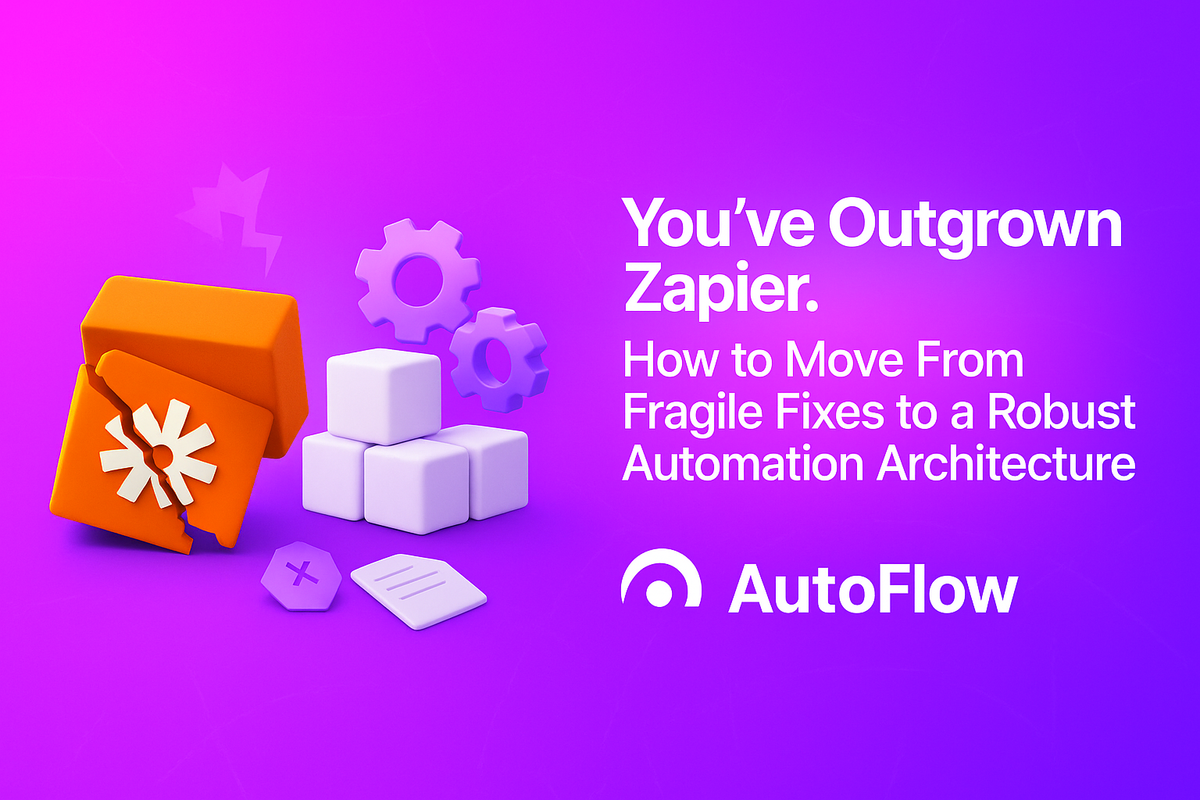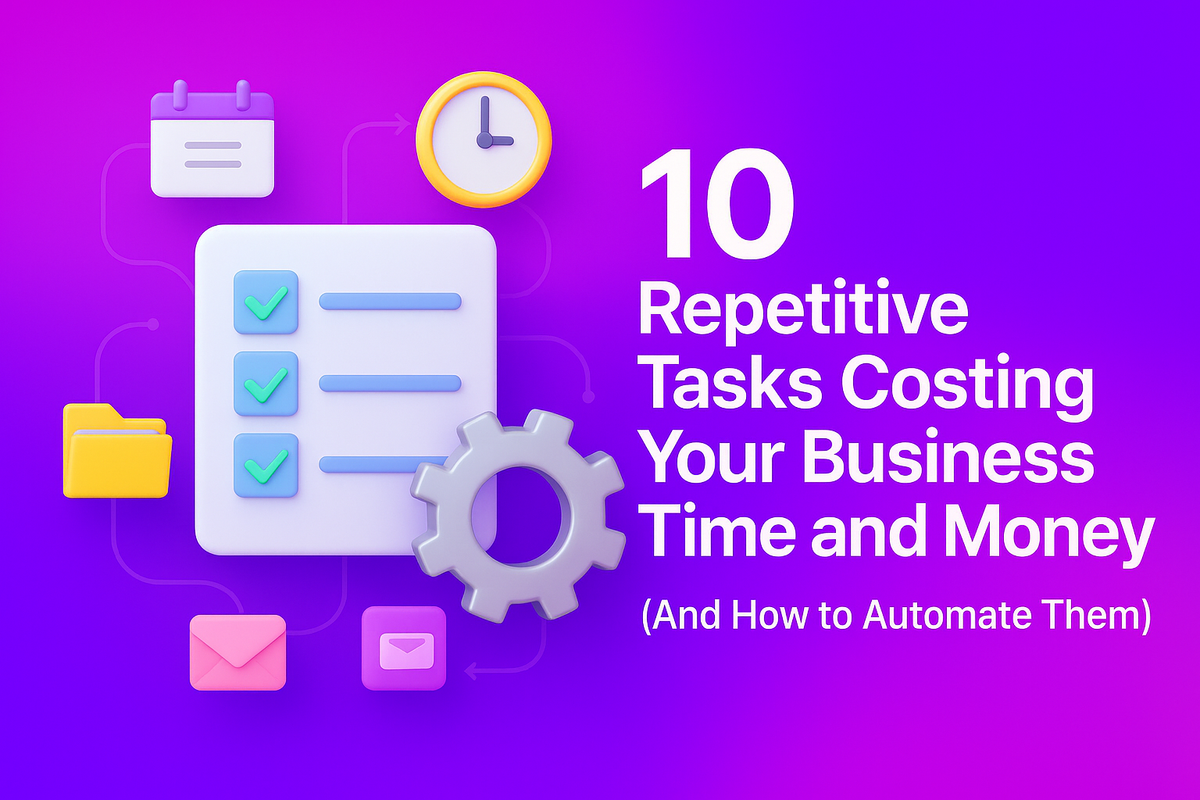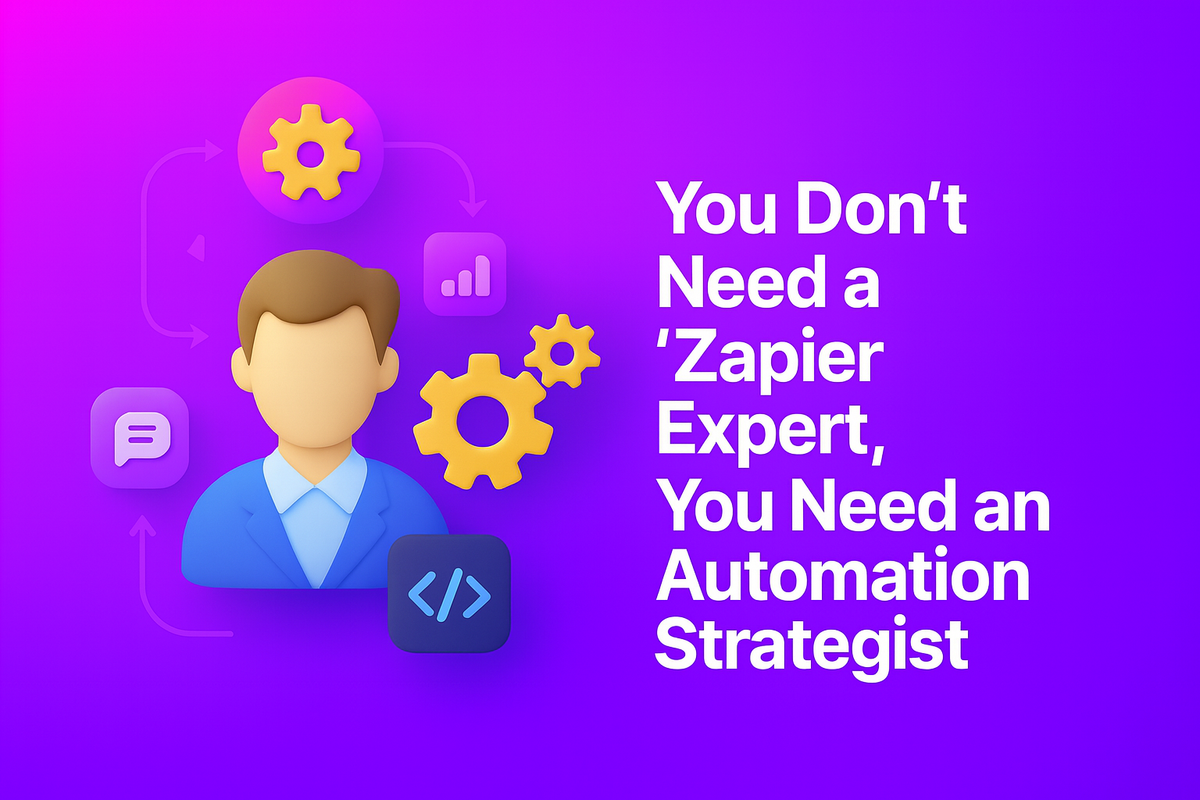
If you're reading this, then phrases like "trigger," "action," and "webhook" are already part of your vocabulary. You know what automation is, and you use it actively. Your Zapier or Make account is likely a complex and tangled web of dozens, if not hundreds, of scenarios connecting your CRM, task managers, accounting, and email platforms. It used to work. For a while.
But now, you're increasingly running into problems that can't be solved by just adding another step to a workflow. These problems have become systemic:
💸 Rising Costs
The no-code platform bill has become an uncomfortably large line item in your P&L, and you've started "saving tasks" by turning off useful but "expensive" automations that could be benefiting your business.
⚠️ API Rate Limits
During peak season (like Black Friday or Christmas), your automations start failing with errors because Shopify, WooCommerce, or another key platform simply can't handle the flood of requests from your numerous workflows.
🏠 Fragility and Maintenance Headaches
Your system has become a house of cards. One Zap triggers another, which writes data to a Google Sheet, and a change in that sheet triggers a third. When something breaks, you or your employee spend hours searching for the cause, digging through activity logs in five different services.
🔒 Lack of Flexibility and Control
You need complex data logic ("IF the customer is from the Netherlands AND the order total is over €100 AND this is their first purchase, THEN assign them a VIP tag and send the data to the loyalty system"). In a no-code builder, this requires 15 convoluted filter steps that are slow and still don't work quite right.
🛡️ Security and GDPR Concerns
Your customer data (which may be sensitive) is passing through the servers of a third-party, often US-based, company, which complicates compliance with European data protection regulations.
🎉 Congratulations—This is Growth, Not Failure
This is not a failure; it is a clear symptom of your business's growth. You haven't just outgrown simple tools. You've encountered what software developers call "technical debt." Continuing to build on this foundation is like setting a ticking time bomb under your company's operational efficiency and scalability.
It's time to graduate from tactical patches to designing a production-grade, robust automation architecture.
Here's how to do it in three phases:
Phase 1: Audit and Consolidate—Untangle the Web and Calculate the Real Costs
Before you build a new house, you need to inventory the old one. The goal of this phase is to mercilessly eliminate everything that isn't essential, identify the "heart" of your operations, and calculate the real cost of the current chaos.
🗺️ Map Your Processes
Not in your head, but visually. Use a tool like Miro, Lucidchart, or a simple whiteboard. Draw how data flows between your systems. Where does a lead come from? What stages does it go through? Where does an order go? How does payment information reach your accounting software? You will discover bottlenecks, duplicated efforts, and illogical connections you never even knew you had.
📊 Conduct an ABC Analysis of Your Automations
Divide all your workflows into three categories based on their criticality:
🅰️ A (Mission-Critical)
These are vital processes. If they stop, your business stops or suffers direct financial losses. This includes order processing, invoicing, payment gateway interactions, and key client communications. These are your primary candidates for migration to a robust, custom platform.
🅱️ B (Business-Important)
These are important, but not critical for survival. Their failure will cause serious inconvenience but won't stop sales. This includes internal reporting, client onboarding, adding leads to a CRM, and project management.
🅲 C (Nice-to-Have)
These are small conveniences. Auto-posting to social media, secondary notifications in Slack, calendar syncs. These can and should be left on simple, cheap no-code services.
💰 Calculate the Total Cost of Ownership (TCO)
Your Zapier bill is just the tip of the iceberg. Calculate the full, real cost:
TCO Formula
Subscription Cost +
Average Task Overage Fees +
(Hours per month you or your staff spend fixing/debugging) x (Cost of that employee's hour) +
The Cost of Errors (e.g., a lost customer due to a sync failure, an incorrect invoice)
It often turns out that a "cheap" cloud tool is actually costing the company thousands in direct and indirect damages.
After this phase, you will have a clear, data-driven understanding: these 3-5 core processes are the operational heart of my business, and they need to run like a Swiss watch, not a homemade gadget.
Phase 2: Choose the Right Architecture—Build the New, Solid Foundation
Once you know what to build, you have to decide what to build it with. Simple cloud-based no-code services are no longer suitable for your core. Here are the professional alternatives:
🖥️ Self-hosted Platforms (e.g., n8n, Windmill)
This is like having Zapier, but on your own server. You install the software on your own hosting environment (for example, in a European data center in Amsterdam or Frankfurt to be fully GDPR compliant).
✅ Pros
- Complete control over data and security
- No limits on the number of "tasks"—you are only limited by your server's power
- Predictable and low costs (only server rental)
❌ Cons
- Requires technical skills for initial setup, configuration, and ongoing maintenance
☁️ Serverless Functions (AWS Lambda, Google Cloud Functions, Azure Functions)
This is the major league in terms of scalability, flexibility, and cost-efficiency at high volumes. You write (or commission) code that performs a specific business logic and upload it to the cloud. The platform automatically provides resources when needed and shuts them down when the task is done.
✅ Pros
- Almost infinite scalability (it can handle any load)
- You pay pennies for the milliseconds of actual code execution time
- Maximum reliability and flexibility to implement any logic
❌ Cons
- This is pure software development. It requires expertise in programming (Python, Node.js) and cloud infrastructure (DevOps)
🔄 The Hybrid Model
The Most Rational Approach
This is the most rational and pragmatic approach for most growing companies. You don't abandon Zapier/Make completely. You leave the simple, non-critical "Category C" tasks on them. But your core, "Category A" processes are moved to a more reliable and cost-effective solution, whether it's a self-hosted platform or custom code.
Phase 3: The Migration—Changing the Engine on a Flying Plane Without Turbulence
The transition to the new system must be completely invisible to your business and your customers.
👥 Run in "Shadow Mode"
The new system is launched in parallel with the old one. It receives the same data, performs the same operations, but at the end, it doesn't send real emails or charge credit cards. Instead, it just records the result to a log. This allows you to compare its performance with the old system for a week or two and catch 100% of any errors and discrepancies with zero risk.
📈 Migrate in Phases
Don't try to move everything at once. Start with one, most critical and high-volume process. Migrate it, confirm it's working perfectly for a week, and only then move on to the next one. This reduces risk and allows your team to adapt.
📊 Implement Logging, Monitoring, and Documentation
From day one, implement professional tools to track the system's operations (logging) and monitor its health. You should learn about a failure from an automatic notification the second it happens, not from an angry customer two days later. Furthermore, every element of the new system must be documented, so that it doesn't become a new "black box" that only one person understands.
Why Not Just Hire a Freelance Developer?
Hiring a programmer to write a script for you is like hiring a bricklayer to build a house. They are an expert at laying bricks. But they need an architect who can design the building, calculate the structural loads, create the blueprints for all the utilities (electricity, water, ventilation), and oversee the project to ensure everything is done correctly and on time.
🏗️ You Need an Automation Architect
An Automation Strategist or Agency is that architect for your business processes. We don't just write code. We analyze your business, design the entire system, select the right technologies, manage the implementation project, and guarantee that the solution not only works today but is ready for your ambitions for years to come.
Your company has grown to the point where operational excellence is no longer a convenience—it's a key competitive advantage. It's time to invest in the foundation that will secure that advantage for the long term.
🤔 Ready to Look at the Blueprints?
If you recognized your own challenges in this article and are ready to move from daily "firefighting" to building a reliable and scalable system, let's talk. We offer a free Technical Architecture Review. We won't try to convince you that you need this—you already know you do. We will help you build a roadmap for a painless migration of your operational system to a new, professional level.


